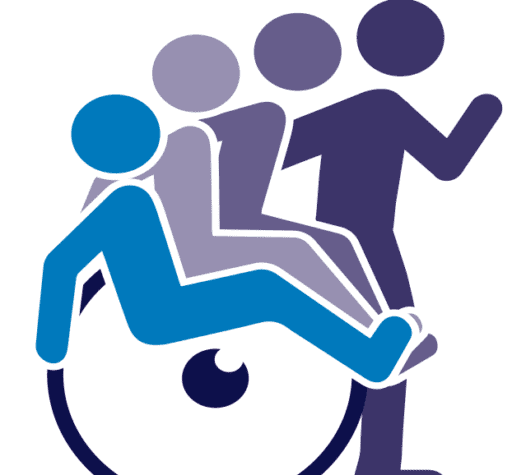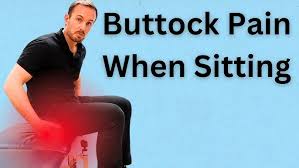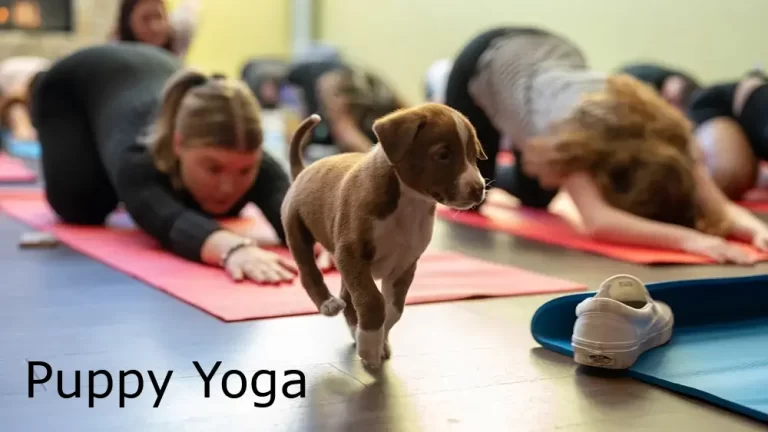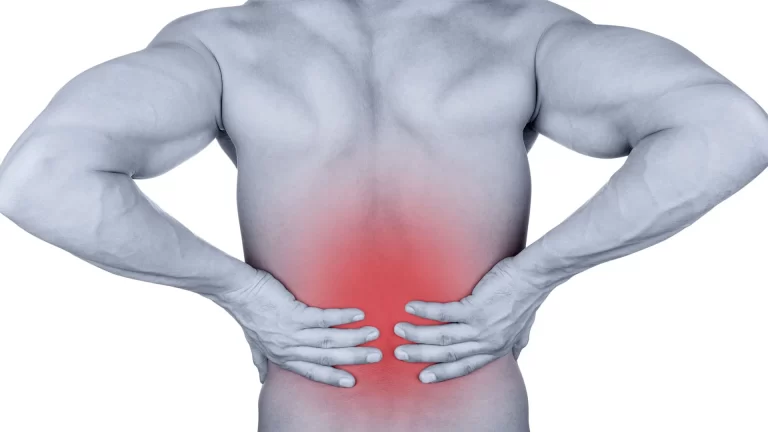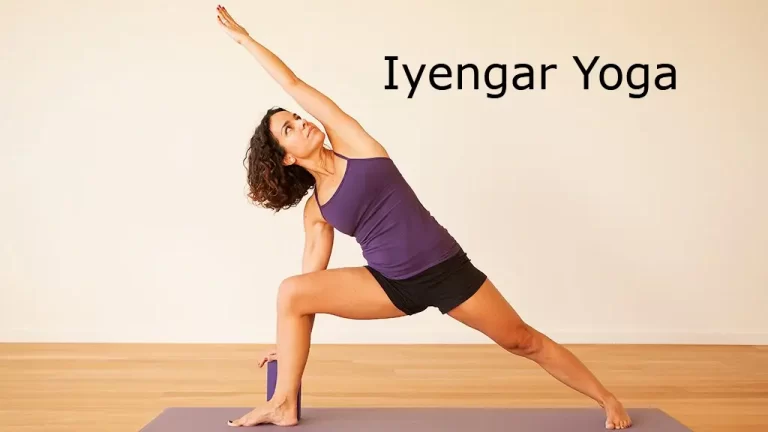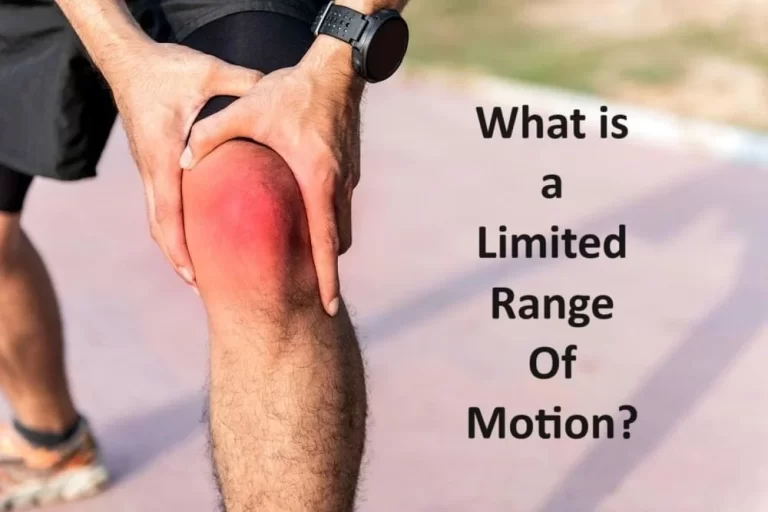How to Relieve Buttock Pain from Sitting
Table of Contents
Introduction:
Long periods of sitting, whether at a desk, in a car, or on a seat, have become commonplace for many people in today’s sedentary lifestyle. Unfortunately, sitting for extended periods can frequently cause buttock pain or discomfort, which makes even simple tasks unpleasant. Muscle weakness, bad posture, compressed nerves, or underlying disorders like sciatica or piriformis syndrome can all cause this kind of pain.
Ignoring the pain might eventually make it severe, impairing mobility and general quality of life. Fortunately, sitting-induced buttock pain can be effectively relieved and prevented with the correct techniques, including ergonomic modifications, focused stretches, and easy lifestyle improvements.
Common Causes of Buttock Pain from Sitting:
Long periods of sitting can cause buttock pain for a variety of reasons, from nerve disorders to muscle strain. The most frequent offenders are as follows:
- Poor Posture: When sitting, slouching, or leaning unevenly puts additional strain on the lower back and gluteal muscles, which can cause soreness and muscular fatigue.
- Prolonged Gluteal Muscle Pressure: Compressing the soft tissues in the buttocks while sitting for long periods without breaks lowers blood flow and might result in pain or numbness.
- Piriformis Syndrome: This condition is caused by tightness or inflammation in the piriformis muscle, which is located deep in the buttocks.
- Ischial Bursitis (Weaver’s Bottom): Deep, aching pain can be caused by inflammation of the bursae (ischial tuberosities) close to the sitting bones, particularly while sitting for extended periods on hard surfaces.
- Weak Core Muscles or Glutes: Proper sitting posture is not supported by weak or underactive gluteal and core muscles, which puts more strain on the hips and lower back.
- Improper Chair Support: Buttock pain can be exacerbated by chairs with poor spinal alignment and uneven pressure distribution due to their lack of ergonomic design or cushioning.
Symptoms of Buttock Pain from Sitting:
Sitting-induced buttock pain symptoms can vary from modest pain to more intense, radiating pain, and they frequently appear gradually. Sharp or shooting pain that may radiate down the leg, particularly in cases of nerve compression like sciatica, stiffness or tightness after extended sitting, and a dull aching.
Additionally, some people may feel numb, tingly, or like they have pins and needles, which could be a sign of nerve irritation or poor circulation. Long periods of sitting, especially on hard surfaces, usually make the pain severe; standing, walking, or stretching usually helps. Early detection of these symptoms can assist in guiding appropriate treatment decisions and keep the problem from becoming chronic.
Diagnosis of Buttock Pain from Sitting:
- A doctor will probably perform a physical examination to determine the origin of the buttock pain.
- The causes of the pain can occasionally be identified. For instance, someone has been hurt in some way, like falling. If there isn’t a clear explanation, a doctor might have to do testing.
- They might suggest an MRI or CT scan to help rule out other possible reasons for the pain, such as arthritis, or an X-ray to rule out a break or fracture.
- A physician may recommend a specialist, such as a rheumatologist, orthopedic specialist, or physical therapist, if they are unable to make a diagnosis.
Treatment of Buttock Pain:
Immediate Relief Techniques:
Improving circulation and lowering pressure on the affected area are crucial for promptly alleviating sitting-induced buttock pain. Every 30 to 60 minutes, getting up and moving around can help reduce stress and avoid stiffness.
If the pain is more chronic, heat therapy may help loosen tense muscles, while applying an ice pack for the first few days can help reduce inflammation. You can reduce pain right away by changing your sitting position, such as sitting up straight, keeping your feet flat, and using a supportive cushion.
Light stretches that increase hip and lower back mobility and relieve tension include the sitting figure-four and hip flexor stretches. These easy steps offer immediate relief and lessen the likelihood that the pain may become severe over time.
Exercises to Relieve Buttock Pain:
Piriformis Stretch:
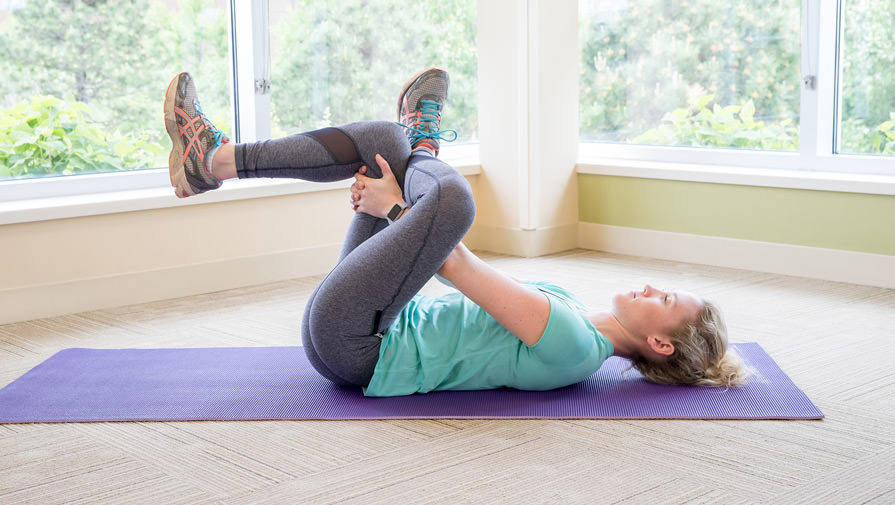
A great exercise for releasing stress in the deep gluteal area is the Piriformis Stretch, particularly if the piriformis muscle is tense or irritated. When this muscle is irritated, it can produce pain or numbness in the buttocks and down the leg since it travels from the lower spine to the top of the thighbone and is near the sciatic nerve. The piriformis can be stretched to lessen this compression, increase flexibility, and minimize the pain that comes with extended sitting. The stretch, which may be done sitting or lying on one’s back, targets the deep muscles and slowly rotates the hip outward, offering instant relief and gradually increasing range of motion.
Seated Figure-Four Stretch:
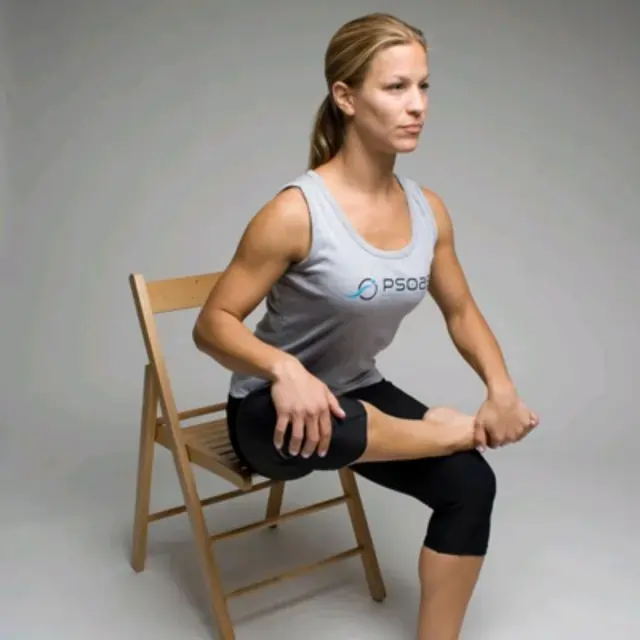
The Seated Figure-Four Stretch is a straightforward but effective stretch that works the hips, glutes, and particularly the piriformis muscle, which makes it perfect for reducing sitting-induced buttock pain. This stretch is done while seated, either on the floor or in a chair, and it involves crossing one ankle over the other knee to make a “figure four” with the legs. You will experience a deep stretch in the buttocks and outer hip of the crossed leg as you slowly bend forward. This position is particularly helpful for people who have tightness or radiating pain from extended sitting or bad posture since it helps to relieve muscular tension, increase hip mobility, and lessen pressure on the sciatic nerve.
Child’s Pose:
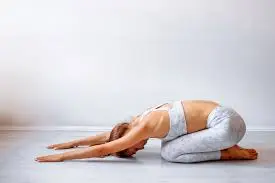
Child’s Pose is a mild, healing yoga pose that eases stress in the hips, buttocks, and lower back areas that are frequently impacted by extended sitting. This posture encourages flexibility and relaxation by lengthening the spine and gradually stretching the hip joints and gluteal muscles. Additionally, it promotes peaceful, deep breathing, which lessens generalized muscle tension. Child’s Pose is a calming addition to any practice for reducing pain from sitting since it works particularly well for reducing buttock and lower back stiffness.
Knee-to-Chest Stretch:
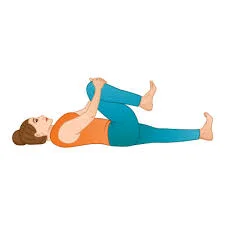
An easy and efficient way to relieve tension in the lower back, hips, and gluteal muscles, all of which are frequently impacted by prolonged sitting, is to perform the Knee-to-Chest Stretch. This stretch helps release tight glute muscles and extend and decompress the spine by having you lie on your back and slowly pull one knee toward your chest.
The stretch is a great way to relieve buttock pain and increase flexibility after extended periods of sitting, since it allows the muscles to fully relax after 20 to 30 seconds of holding.
Glute Bridges:
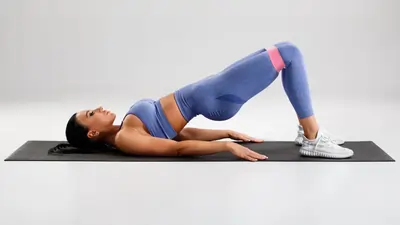
Glute bridges are a potent workout that tones the core, lower back, and gluteal muscles, important regions that are frequently stressed or weakened by extended sitting.
By engaging and activating the buttock muscles, this exercise helps to mitigate the negative effects of bad posture and inactivity. Frequent glute bridge exercises enhance pelvic stability and spinal alignment in addition to relieving lower back and buttock stress. It’s a crucial workout for easing present pain as well as averting future sedentary-related suffering.
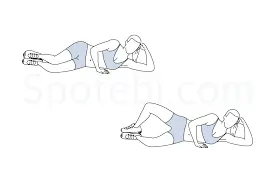
Clamshells are a specific exercise that builds strength in the external rotators and hip abductors, especially the gluteus medius, which is important for pelvic stability and good posture.
The upper knee is raised while the feet remain in touch. Long periods of sitting can weaken the glute muscles, which this exercise helps to activate. Clamshells decrease pain from misalignment, increase overall mobility and joint stability, and lessen strain on the lower back and buttocks by strengthening and balancing the hips.
Hip Flexor Stretch:
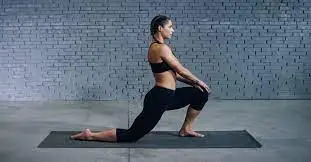
To counter the tension that builds up in the front of the hips from extended sitting, the Hip Flexor Stretch is crucial. Long periods of sitting cause the hip flexors to stay shortened, which can cause stiffness, bad posture, and more strain on the buttocks and lower back.
The front of the hip and thigh are stretched by gently pressing the hips forward, which relieves tension and helps to realign the body. Including this stretch in your regimen will help you become more flexible, lessen lower back and buttock pain, and promote better movement patterns.
Cat-Cow Stretch:
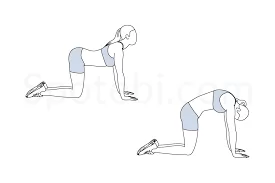
A soft, flowing exercise, the Cat-Cow Stretch helps increase spinal flexibility and relieve stress in the back, hips, and buttocks areas that are frequently injured by extended sitting. This stretch, which is done on hands and knees, alternates between elevating the head and tailbone (Cow) and arching the back upward.
In addition to engaging the core and mobilizing the spine, this motion promotes good postural alignment. A calming and efficient method of reducing pain and stiffness after extended periods of sitting, the rhythmic movement also improves circulation and relaxes tense muscles in the lower back and glutes.
Lifestyle and Long-Term Solutions:
More than simply temporary solutions are needed to address sitting-related buttock pain; long-term lifestyle adjustments that support healthy joints, balanced muscles, and good posture are needed. The detrimental effects of extended sitting can be mitigated by including regular mobility, such as stretching, walking, or using a sit-stand desk.
Pressure on the spine and buttocks is further decreased by maintaining a healthy body weight. Purchasing a supportive seat cushion or ergonomic chair also promotes good posture and reduces muscle fatigue. You can reduce current pain and increase your resistance to future stiffness and pain by forming these long-lasting behaviors.
Conclusion:
In today’s sedentary lifestyle, buttock pain from extended sitting is a typical problem, but it doesn’t have to be permanent. You can take proactive measures to obtain relief by comprehending the underlying causes, which may include nerve compression, muscular weakness, or bad posture.
It is possible to considerably lessen pain and avoid recurrence by implementing regular movement breaks, employing appropriate seated support, and performing focused stretches and strengthening exercises like clamshells and glute bridges.
Maintaining the health of your glutes and lower back can be greatly aided by small daily routines like being active and correcting your posture. You can sit more comfortably and shield your body from chronic strain with regularity and attention.
FAQs
Use massage techniques including kneading, compression, and trigger point therapy to ease buttock muscle pain. Apply pressure on aching spots with a foam roller or tennis ball, then hold the pressure there for 30 to 60 seconds. Stretching and deep tissue massage may also be helpful.
The development of excruciating muscular knots known as trigger points, which produce intense pain when lightly squeezed or touched, is a hallmark of myofascial pain syndrome.
Depending on what suits you, try using hot or cold packs. Swelling can be decreased by applying ice to the area for 15 minutes many times a day. A heating pad or other heat source might help relax a tense muscle. Stretch the muscles around the piriformis.
Focus on lowering inflammation, stretching, and strengthening the surrounding muscles to relieve sciatica pain in the buttocks. Initial alleviation can be obtained with the use of cold or heat packs, mild stretching techniques, and over-the-counter painkillers. Consider physical therapy, complementary therapies like acupuncture, or see a doctor about possible steroid injections or other treatments if the pain doesn’t go away.
Resting, applying hot or cold packs, taking over-the-counter painkillers, and performing mild stretching exercises are all examples of home remedies for buttock pain. It is recommended to see a healthcare provider if pain continues or gets severe.
Either a minor condition that resolves on its own or a major problem requiring immediate medical attention can cause buttock pain. If your buttock pain is significant and chronic, you should undergo a clinical examination.
Buttock pain can be either a minor condition that goes away on its own or a serious issue that requires emergency care. You ought to have a clinical examination if your buttock pain is severe and chronic.
Pain in the buttocks can come from extended sitting, underlying disorders such as sciatica, or injuries to the coccyx.
Concentrate on posture, breaks, and stretches to alleviate buttock pain when sitting. Use a cushion, adjust your chair, and get up and move about frequently. Additionally beneficial are mild stretching techniques, particularly those that target the piriformis muscle.
References:
- Ames, H. (2025, January 6). What causes buttock pain when sitting? https://www.medicalnewstoday.com/articles/pain-in-bottom-when-sitting
- Dumain, T. (2023b, June 2). How to relieve buttock pain: 7 exercises to try. CreakyJoints. https://creakyjoints.org/diet-exercise/buttock-pain-exercises/
- Bridges. (n.d.-b). [Video]. Hingehealth. https://www.hingehealth.com/resources/articles/buttock-pain-when-sitting-and-lying-down/
- Healthy Bodies Physiotherapy. (2022, January 14). Buttock pain when sitting. Physiotherapy Services Cheltenham. https://www.healthybodiesphysiotherapy.com.au/buttock-pain-when-sitting/
- Nwachuku, A., DO. (2023, March 3). What causes buttock muscle pain, and how to relieve it. Spine-health. https://www.spine-health.com/blog/what-causes-buttock-muscle-pain-and-how-to-relieve-it
